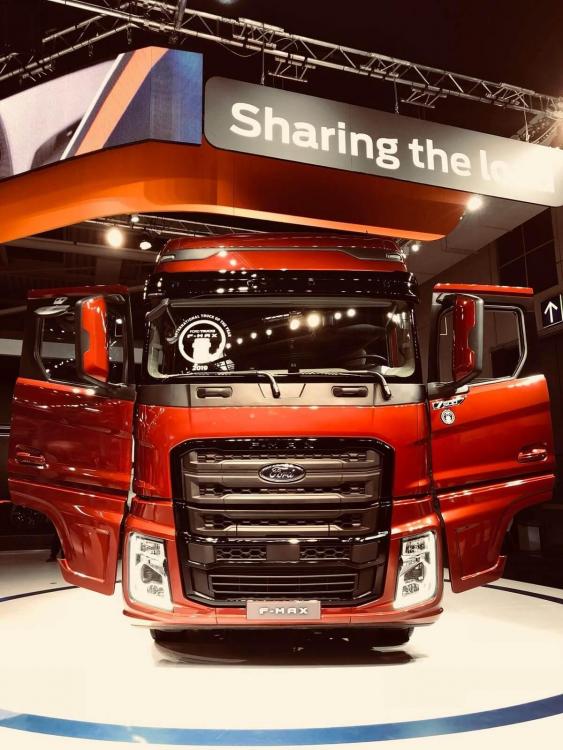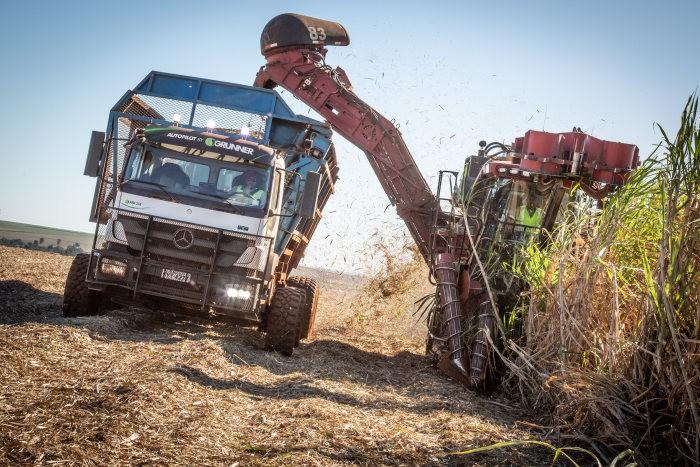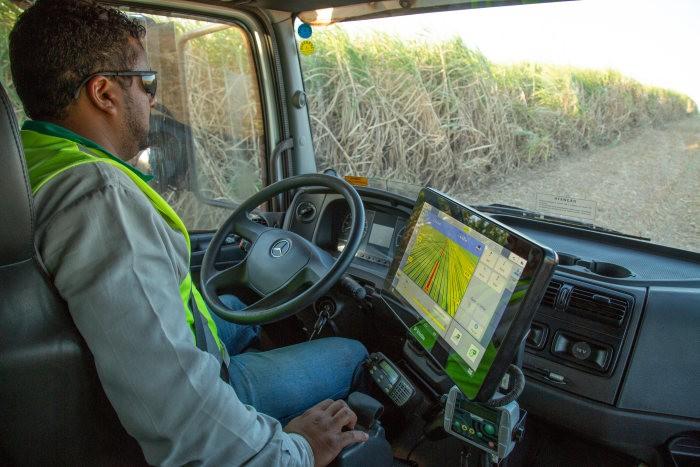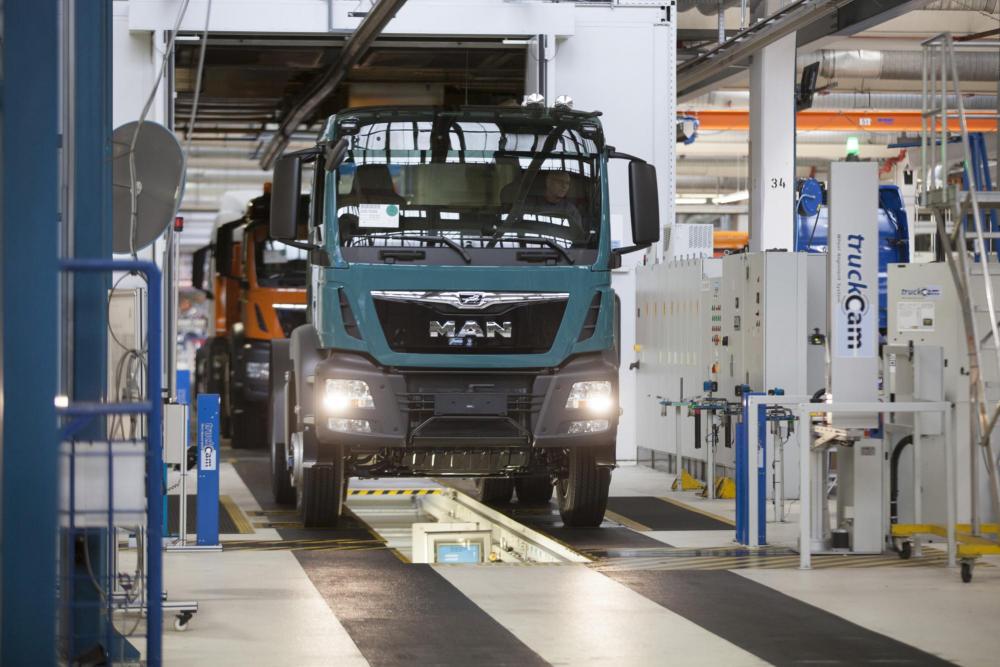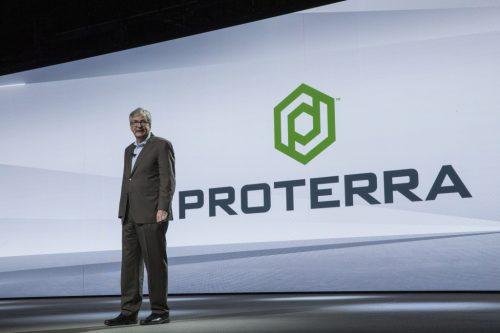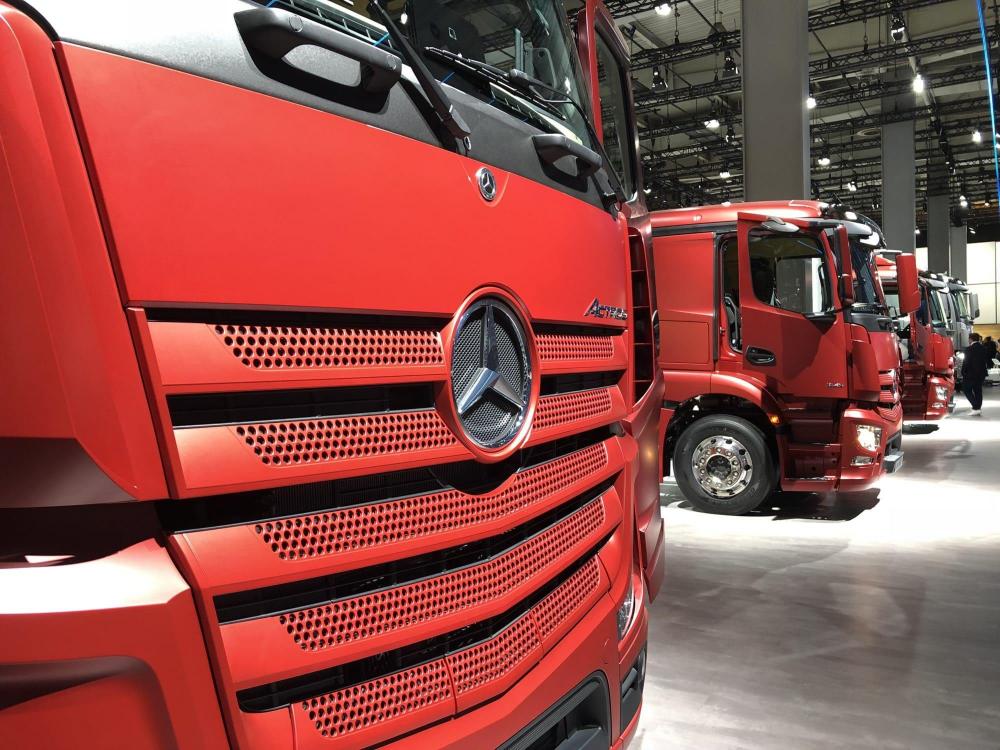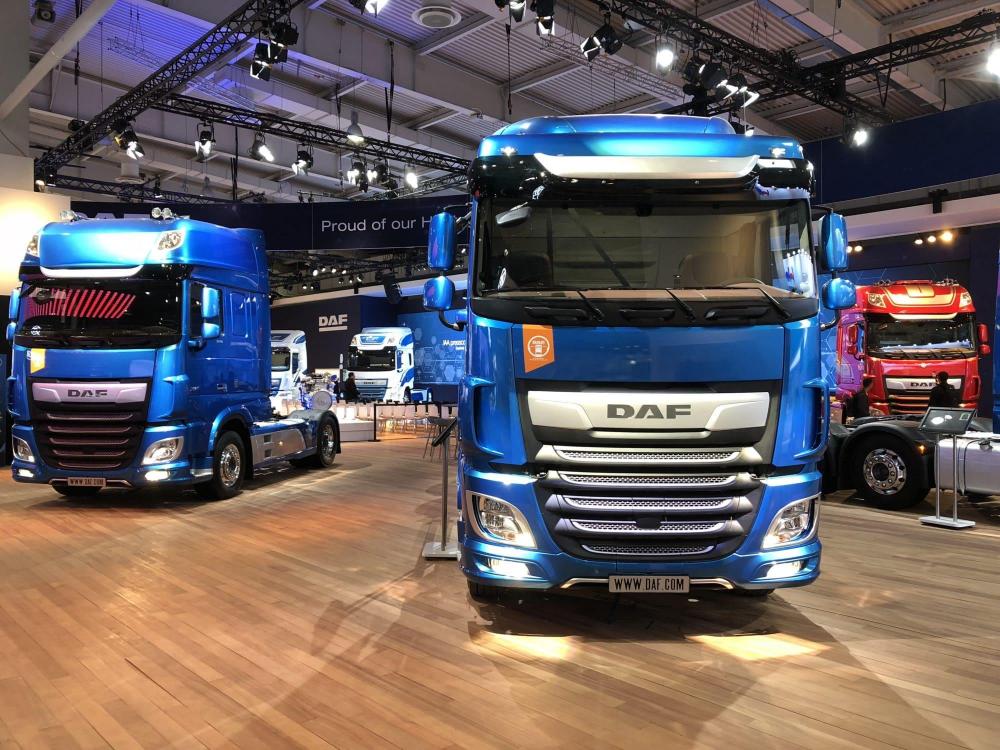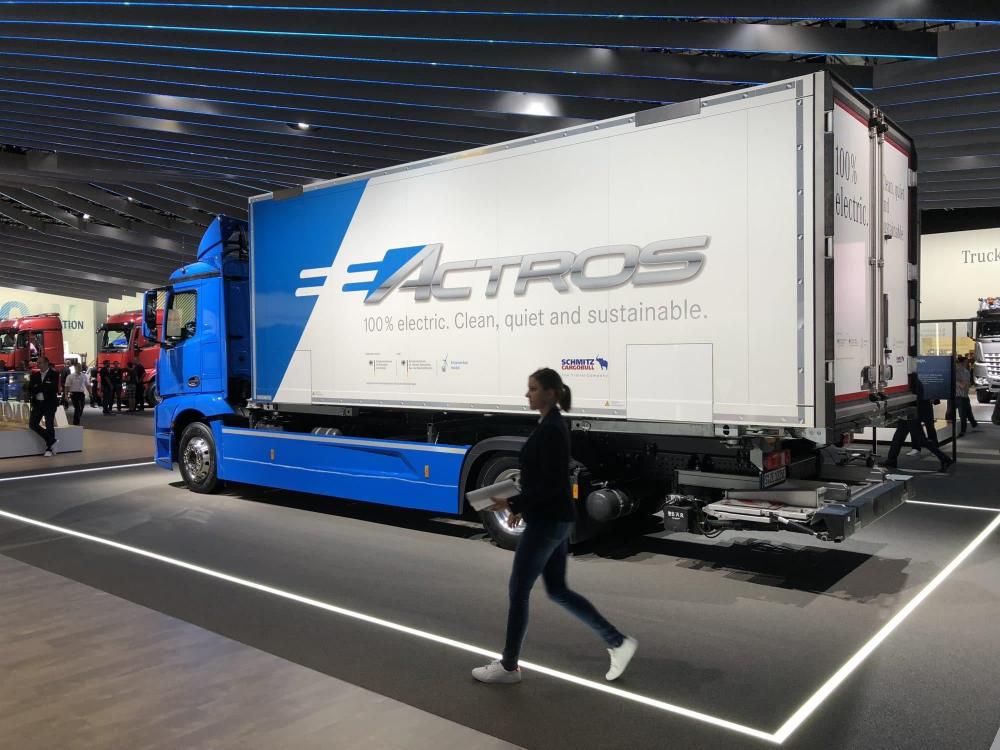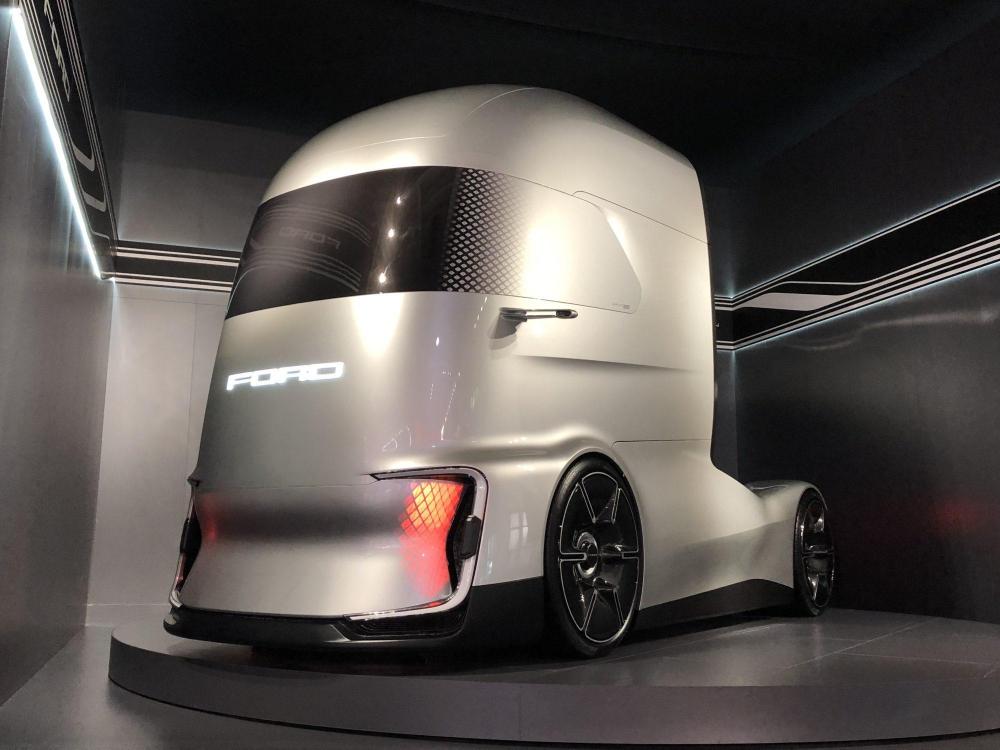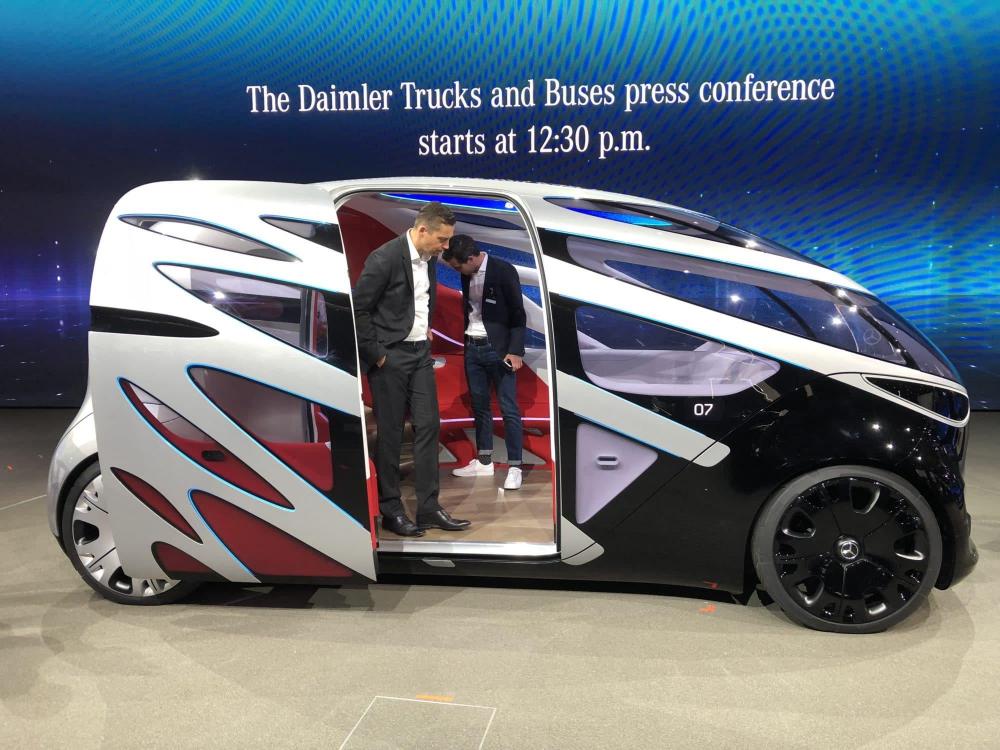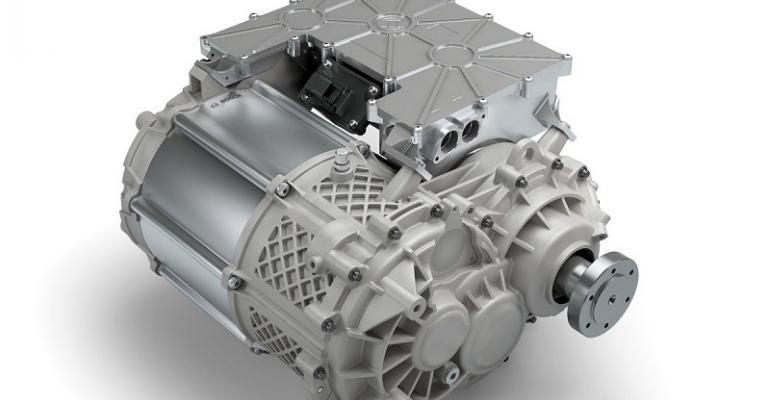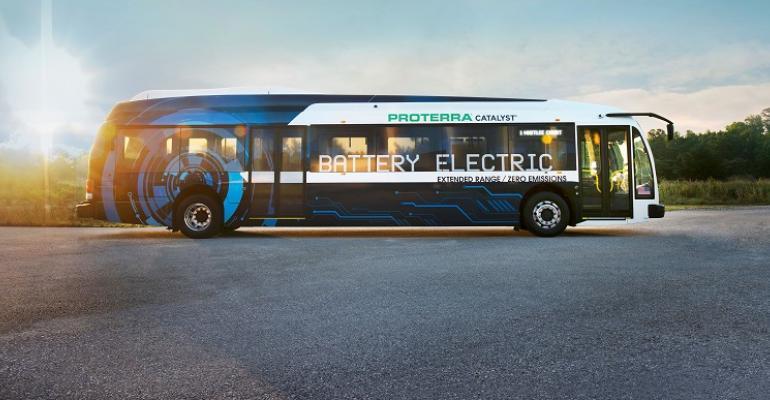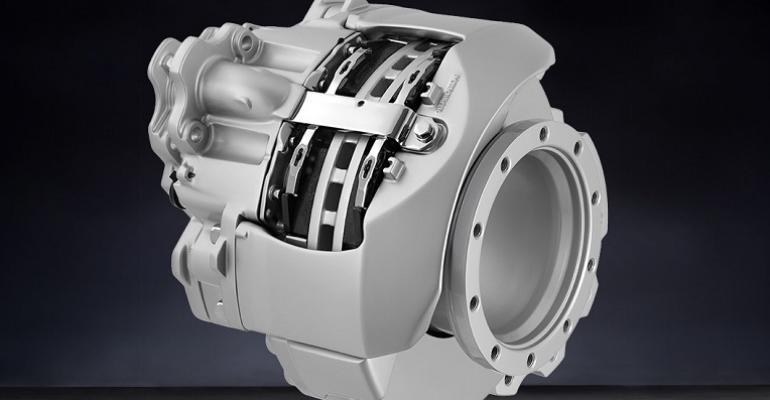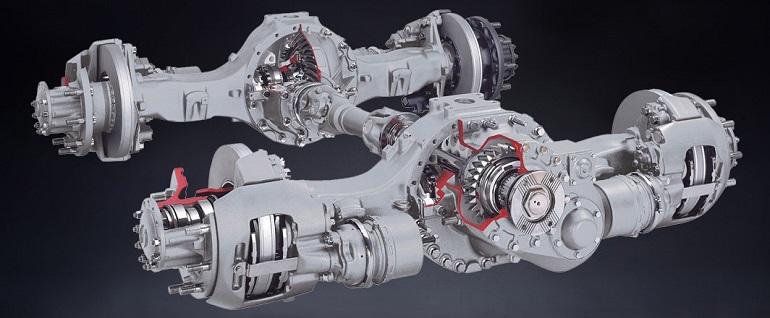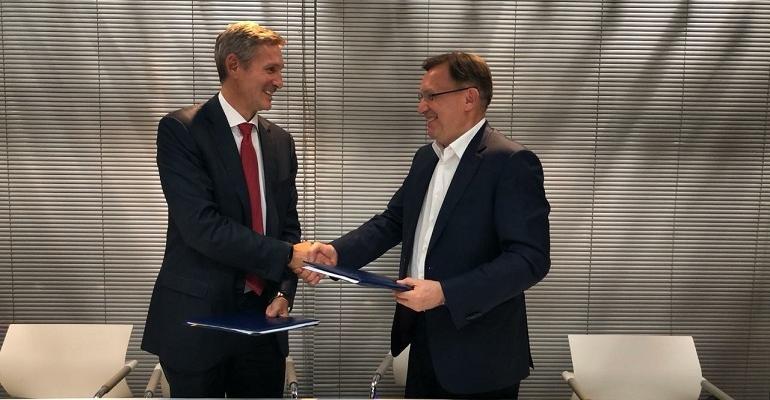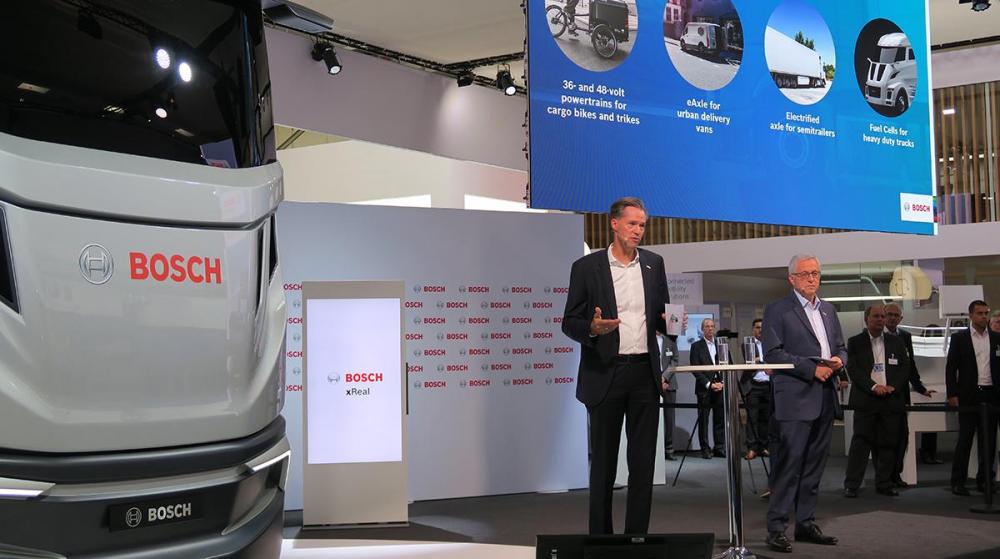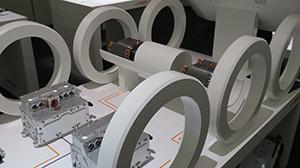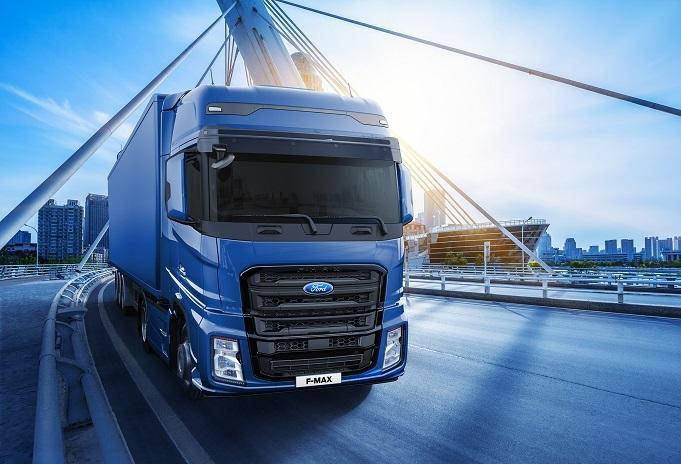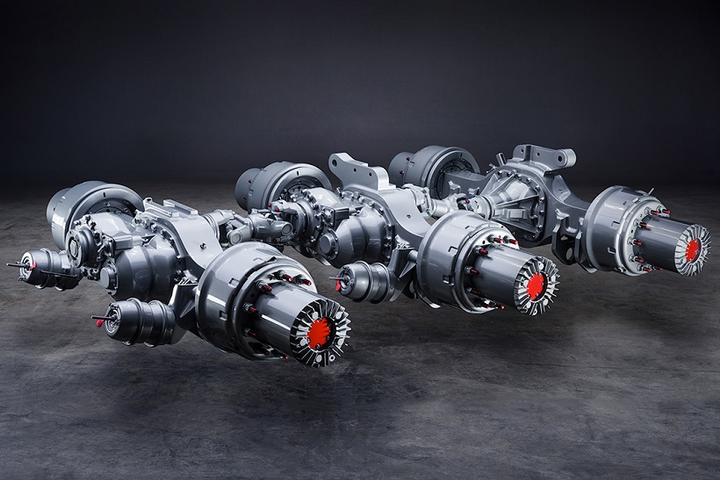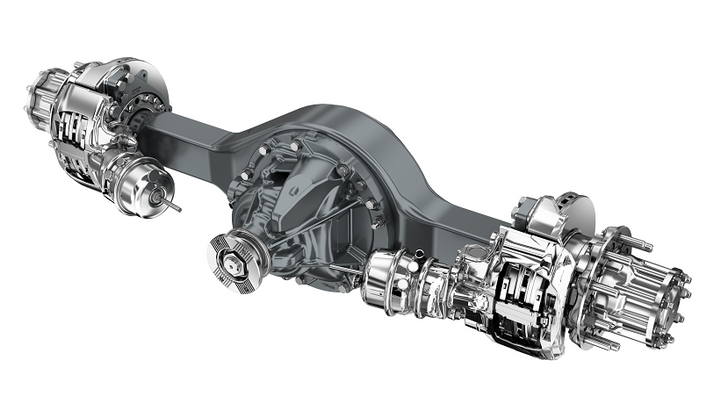
kscarbel2
Moderator-
Posts
18,550 -
Joined
-
Days Won
112
Content Type
Profiles
Forums
Gallery
Events
Blogs
BMT Wiki
Collections
Store
Everything posted by kscarbel2
-
Trump and Immigration (Illegal Immigrants in the US)
kscarbel2 replied to kscarbel2's topic in Odds and Ends
Immigration is not a human right, rather it is a privilege. Most people who "legally" apply to immigrate will sooner or later succeed. Those who would criminally cross the border illegally are generally undesirable as residents in the US. -
Trump and Immigration (Illegal Immigrants in the US)
kscarbel2 replied to kscarbel2's topic in Odds and Ends
‘Immigration is not a human right’: Hungary slams ‘pro-migrant’ UN officials for ‘spreading lies’ RT / September 19, 2018 Hungary’s Foreign Minister Peter Szijjarto has accused the UN human rights watchdog of “spreading lies” about his country, saying that immigration was not a “fundamental human right.” The official took aim at the “independent experts” with the UN Human Rights Council, stating they “should not be independent from the truth.” “Recently, unfortunately, some UN officials started to spread lies against and about my country,” Szijjarto told the UN body’s meeting on Wednesday. Such officials would like to “force on us impossible things,” namely allowing illegal migrants into the country, Szijjarto stated. “They say that migration is a fundamental human right, which is a lie,” he stressed. The harsh statement of the foreign minister came as a response to criticism against Hungarian anti-immigration policies. Last week, the UN rights body blasted the so-called ‘Stop Soros’ law, adopted by the country’s government back in July. The UN paper said Hungary “attacks against civil society, migrants, refugees and asylum seekers” with the law, adding that it’s against the international human rights law and poses a threat to the “values” of the whole European Union. It added that it targets the critical “civil society” and fuels “hostility, xenophobia and … discrimination against migrants, asylum seekers, refugees and all those trying to provide them support.” The ‘Stop Soros’ law has imposed restrictions on foreign NGOs, which work with migrants, obliging them to seek licenses from the government. It also criminalized aiding migrants, namely “providing financial or property benefit” to them or simply informing them about the asylum-seeking procedures. Those who do so could now face 12 months in jail. The controversial law is named after Hungarian-born billionaire, globalist and strong supporter of open-border policies George Soros. Hungary’s Prime Minister Viktor Orban has repeatedly accused him of conspiring to stir unrest in his native country and to undermine Europe’s stability with mass-migration waves. A strong anti-immigration stance has also put Budapest at odds with the EU. Last week, the EU parliament greenlighted a move to trigger Article 7 of the 2007 Treaty of Lisbon against Hungary. The provision is designed to be applied when there is “a clear risk of a serious breach” of EU values by one of its member states and is often referred to as the ‘nuclear option’ of the bloc. If fully implemented, Budapest would be deprived ofvoting rights in the EU. Budapest, in turn, accused Brussels of wishing to turn Hungary into a “country of migrants,” calling the EU parliament vote a “petty revenge” of the pro-immigration crowd. Other countries, who are at odds with the EU over immigration policies, namely Poland and Czech Republic, rushed to support Budapest after voting on Article 7. Last year, Poland itself became the target for the same Article 7 proceedings, over its judicial reform. -
Ford Launches F-Max Tractor for Global Markets
kscarbel2 replied to kscarbel2's topic in Trucking News
Not at all to me. The Scania, DAF, MAN, M-B, Ford, Iveco and Volvo cabs all have completely different architecture (engineering). -
DAF: 90 years of innovative transport solutions
kscarbel2 replied to kscarbel2's topic in Trucking News
https://en.wikipedia.org/wiki/Ashok_Leyland -
FordBlog / September 20, 2018 The result of many years of research and development, the new Ford F-MAX is a great source of pride for all of us, taking the international Truck of the Year at its world premiere at the IAA Hannover Commercial Vehicle Show. Ford Otosan first entered the commercial truck segment in 1959. "In 1982 with the construction of our Inonu commercial truck plant, our truck business entered into a new era,” said Ford Otosan (Koc Holding) CEO and President Ali Koc. “Today, we are proud to be the first Turkish company with the ability to develop and produce a vertically integrated truck including the drivetrain. Today, we are presenting the world premiere of F-MAX. The International Truck of the Year award reflects the world class level of our production and engineering capabilities. I congratulate all my colleagues who contributed. Our hammer is ready to enter the international market as a new player," he said. In 2010, Ford Otosan and Ford Motor Company made a strategic decision for the truckmaker to become a global player. “With the strategic decision we arrived at in 2010, we took massive steps towards the growth of Ford Trucks. We have completed nationwide dealer network in Turkey. After establishing our sales network in the Middle East, Africa, Russia and Turkic Republics, we continued to grow in international markets with the opening of dealers in Central and Eastern Europe. As of today, we operate in 33 countries. By the end of 2020, we plan to have sales representation in 51 countries. We have invested over 400 million dollars for Ford Trucks since 2015. In 2017, we increased our sales in international markets by 50 percent. Today is a culmination of our deep investment in Ford Trucks. F-MAX will accelerate our growth in international markets. Our infrastructure and global structuring are ready for F-MAX to enter the international markets as a new player. The goal of Ford Trucks is to export one out of three vehicles we produce, and sell 50 percent of F-MAX production in European markets." .
-
IAA: Breakthrough for gas with fuel increasingly available
kscarbel2 posted a topic in Trucking News
Scania Group Press Release / September 20, 2018 At this week’s IAA in Hanover, the major commercial vehicles trade fair, Scania premiered its long-distance coach fuelled by liquified natural gas (LNG). As cities across Europe rally to curb emissions and carbon-conscious operators follow suit, gas is increasingly seen as the simplest alternative to diesel. “Some ten years ago, I was convinced this breakthrough would come; it’s just meant being patient,” says Zoran Stojanovic, a gas vehicles expert at Scania. “Now we’re seeing more and more applications for gas and sales are really taking off.” He credits the proliferation of gas-powered vehicles to the rapidly expanding fuelling infrastructure for LNG and CNG, compressed natural gas. The first LNG filling station in Germany was, for example, recently opened and this year Italy has gone from a single LNG station to twelve. With greater filling opportunities, more customers are considering purchases of gas vehicles. “Don’t ask me what comes first: the hen or the egg,” Stojanovic remarks. “The infrastructure and fleet must grow in parallel; we need to keep eggs heated while feeding hens.” Strong city growth CNG vehicles are showing the strongest growth and for example Madrid recently ordered 460 new buses, of which 184 from Scania. This huge investment has been made in preparation for the city’s 2025 diesel ban. With cities in the forefront of the shift to gas, more vehicle applications need to become available, according to Stojanovic. “Servicing cities not only involves supplying buses, distribution trucks and refuse trucks. We tend to overlook the fact that growing cities require a host of daily service; houses will be built, streets and roads maintained and sewage system improved. Scania has recently introduced a gas-powered tipper truck but we will also in the coming years need the entire range of construction vehicles with gas tanks.” Larger market for gas vehicles An encouraging development is that as gas vehicles become more commonplace, operators can expect greater residual value. There is, in short, a larger market for these trucks and buses. In phasing out fossil fuels, switching to LNG and CNG is seen as an intermediate step in reducing carbon emissions by some 20 percent. However, these is a vast potential for expanding CO2 free biogas production through anaerobic digestion of organic waste, explains Stojanovic. In Sweden, for example, fuel pumps at filling stations now have an 85-percent biogas share. “As biogas production takes off, we can blend in more and more renewable fuel. Many countries are already producing biogas earmarked for heating and generating electricity rather than for transport. Favourable taxation of this clean fuel could certainly speed up transition.” . -
Daimler Press Release / September 20, 2018 São Bernardo do Campo / Stuttgart – Automated Mercedes-Benz trucks are being used for the first time in the Brazilian sugar cane harvest. As part of a development partnership with the Brazilian agricultural technology manufacturer GrunnerTech, Mercedes-Benz do Brasil has configured 18 Mercedes-Benz Axor 3131 trucks specifically for automated use in sugar cane harvesting. The Axor, which has proven itself on the Brazilian market, is equipped with all the technological components required for automated Level 2 driving: the vehicle automatically controls the speed and proximity as well as longitudinal and lateral guidance. Although the driver retains control of the truck at all times, his hands do not have to be permanently on the steering wheel. In addition to the automated driving functions, the Axor has an additional front axle, extended tyre spacing, "high flotation" tyres for agricultural use and antennas to receive satellite signals. Two of these automated trucks are already in customer service at AgroCana Caiana in the fields of the Brazilian state of São Paulo. A total of 18 vehicles will soon be sent to other Brazilian customer. How does this work in practice? Before the truck can actively help on the plantation, the harvest route is determined on the computer with a level of accuracy down to the centimetre. The automated journey is controlled via cruise control, GPS and geo-referencing. The Axor works together with a sugar cane harvester, which also drives autonomously and conveys the harvested sugar cane straight to the truck body. The average speed is around six kilometres per hour. Once the Axor has been filled, the driver takes control of the truck again to transfer the goods to a vehicle with a larger capacity. What advantages does the automated truck offer the customer? On the one hand, the automated Mercedes-Benz Axor is in operation 24 hours a day. In addition, the new truck also pays off financially for the customer: compared with a conventional tractor, fuel savings of up to 50 percent are possible. Lubricant consumption is reduced by 40 percent and servicing and maintenance costs fall by 30 percent. Precisely pre-set route guidance also increases productivity: One vehicle is able to harvest twice as much product in the same period of time. .
-
Superb video, so much goes into the IAA show, the world's best truck event.
-
Bloomberg / September 20, 2018 Volkswagen AG’s MAN unit is sticking to a profitability target it fell short of for years amid painful cost-cutting, underscoring the ambitious goal of the German automaker’s truck division to generate industry-leading returns as it prepares for a possible share sale. MAN still aims to generate an operating profit margin of about 8 percent even as some business areas like smaller vehicles or buses are unlikely to achieve that level, Chief Executive Officer Joachim Drees said Wednesday in an interview at the biannual commercial vehicle show in Hanover, Germany. “I do want to have aspiring targets -- we might not get there in some areas, but what’s more important is that the whole organization adopts a mindset that constantly tries to make things better,” Drees said. “We changed a lot in recent years and made a lot of improvements, but we want more.” Boosting MAN’s returns is vital for parent VW’s truck division that was recently renamed Traton AG to deliver on a target of an average operating profit margin of 9 percent across industry cycles. Traton’s Munich, Germany-based MAN subsidiary lags behind sister brand Scania in terms of profitability. Scania specializes in lucrative heavy-duty trucks, whereas MAN offers a full range of commercial vehicles from the TGE delivery van to the heavy-duty TGX range. Smaller vehicles tend to be less profitable than larger ones. MAN as a whole improved its operating margin to 4.3 percent in the first half of the year from 4 percent in the year-earlier period. Its truck and bus operations had a margin of 5.5 percent. Boosting efficiency across the entire organization is important to finance huge investments for new technology like electric vehicles and digital services at a time when truck demand in key markets is robust. “We want to take the next step now and become more weather-proof for when market conditions change,” Drees said. “That includes further growth in Europe and narrow the distance to the number one,” he said, referring to European market leader Mercedes-Benz trucks, a unit of Daimler AG. Europe is the main sales region for both MAN and Scania. VW’s supervisory board this week gave the go-ahead to prepare Traton, which comprises Scania, MAN and a business in Brazil, to access capital markets as it considers an initial public offering next year. VW truck chief Andreas Renschler said Tuesday the timing of a possible deal is fluid and depends on market conditions. The proceeds would generate fresh funds to expand outside Europe and fuel a challenge to global truck-industry leaders Daimler and Volvo AB. Drees said there is no set time frame yet for the split-up of MAN SE, an industrial conglomerate controlled by VW since 2011 with a history that roots back 260 years. Its truck and bus operations have been folded into Traton, and its business producing large diesel and turbo engines as well a holding in gearbox maker Renk AG are due to be shifted to another unit within VW. VW’s Traton unit will host a capital markets day for analysts and investors on Thursday. .
-
Navistar outlines role within newly formed Traton Group alliance
kscarbel2 replied to kscarbel2's topic in Trucking News
Navistar already benefits from Traton alliance: Clarke John G. Smith, Truck News / September 20, 2018 HANNOVER, Germany – Navistar is already realizing the benefits of extra purchasing power made possible through a 17% equity stake secured by Volkswagen Truck and Bus – recently rebranded as Traton Group. A related joint venture for procurement activities offered the business access to a bigger scale, Navistar president CEO Troy Clarke said during the IAA truck show in Germany. There have also been opportunities to licence technology and participate in related research and development. A Traton-developed powertrain is in the works for use in Navistar trucks, and is expected in 2021. “We were the first alliance partner of what is now Traton, and that was a multi-year journey,” said Clarke. “At the end of the day, [chief executive officer] Andreas Renschler and leadership at Traton said this is a company that has more good days ahead of it than bad days ahead of it.” There were certainly some challenges, but Navistar is now enjoying black ink in its business ledgers. The business has improved its EBITDA six years in a row, and is now making net income rather than recording losses. “It’s really been, financially, on a good path,” said executive vice-president and chief financial officer Walter Borst. Through shared procurement the companies expect to save $500 million over five years, and realize a $200 million run rate by the fifth year. “We’re on track to do this,” he said. A Traton joint venture with Hino is also looking to secure savings in a similar way. Traton has demonstrated further faith in Navistar by increasing its stake over the original 16.6%, buying shares on the open market and at rates higher than those paid when securing the first shares, Borst added. The deal involving the original equity stake closed in March 2017. Navistar has also hinted at a new product to be launched in early November. . -
Truck News / September 20, 2018 HANNOVER, Germany – Allison Transmission unveiled its newest medium-duty 9-speed fully automatic transmission at the IAA Commericial Vehicles show in Hannover, Germany. The reveal marked the product’s global launch. The new transmission was designed for operations including distribution, pickup and delivery, as well as construction applications. “The new 9-speed transmission was built on proven reliability and durability of our 2000 series 6-speed transmission which has accumulated more than 100 billion miles in commercial operation,” said Randy Kirk, senior vice-president of product engineering and product teams. “It delivers significant fuel savings without compromising the productivity of Allison automatic technology. Customers can look forward to a better cost of ownership experience as this product is designed to address and meet the needs of a wide variety of applications including, rental, lease, construction, and shuttle.” The new 9-speed also features an optional integral stop-start system, optimized gear ratios, and Allison’s Fuel Sense controls. “These same features will also help vehicle manufacturers meet strict emissions regulations,” Kirk added. “It also features Allison continuous power technology, proving smoother, full-power shifting, superior acceleration and startablity, unmatched by any other transmission.”
-
Proterra closes $155 million investment with Daimler, others
kscarbel2 replied to kscarbel2's topic in Trucking News
Daimler chief announces Proterra investment, talks trade and warns of potential for a soft CV market Jeff Crissey, Commercial Carrier Journal (CCJ) / September 20, 2018 Automation was the overarching theme at IAA 2014, while connectivity and electric vehicles stole the show two years later. At IAA 2018, the world’s largest commercial vehicle show in Hannover, Germany, the theme was evolutionary rather than revolutionary as OEMs and suppliers announced production models (at least in Europe) that showcase much of what they promised in the last four years. Mercedes-Benz’ new Actros is a prime example, a ready-for-order cabover that boasts SAE Level 2 autonomous capability with its Active Drive Assist platform. The technology isn’t just for Europe, either. While Daimler’s ADA system will first be rolled out there, “We will be providing it to Freightliner and Fuso as well,” said Martin Daum, head of Daimler Trucks & Buses during a press conference at the trade show. Daimler also announced another major development for its electric drivetrain development, investing $155 million in Proterra, a California-based manufacturer of zero-emissions local transport buses. The company’s configurable Catalyst platform is capable of serving the full daily mileage needs for most transit routes on a single charge. “We started working on electric trucks and buses at a very early stage and we aim to set the standards here in each relevant segment,” said Daum. “We expect the cooperation with Proterra to deliver additional impetus for the development of heavy-duty commercial vehicles with electric drive. In this way, we are broadening our scope in particular concerning the key technology of the battery – also with regard to North America.” Within the last two years, Daimler has launched a number of electric-driven vehicle initiatives across a wide variety of North American vehicle segments, including the Fuso eCanter, Thomas Built Buses Jouley and Freightliner eCascadia and eM2. Daum said the challenge remains finding the right electric solution for each business use case. “The required range depends on the routes a truck or bus travels on, and the opportunities of when and where to charge vary from customer to customer,” said Daum. “This results in a host of requirements and that takes time to meet those, but I think we are doing well on these counts.” Tariffs and trade As a leading global manufacturer, Daimler Trucks & Buses and its Daimler Trucks North America subsidiary historically have been tight-lipped in recent years when asked about to comment on the renegotiation of U.S. trade policy with its North American partners, recent tariff hikes and trade posturing worldwide. During a roundtable with the North American press prior to the press conference, Daum expanded on the company’s statement that it remains a proponent of open borders and free trade. “Whoever separates itself from the global markets ultimately suffers the most,” said Daum. “You get a bigger share but fewer patrons. A bigger share of a smaller cake might be less than a smaller share of a much larger cake.” Corporations like Daimler with operations in all corners of the globe are more susceptible to the threat of higher tariffs. “Global for us means we are strongly embedded in the local economies that we serve, whether it’s China, Japan, India, Europe, Brazil or North America,” said Daum. “We employ thousands of people and invest hundreds of millions of dollars in each market. But on the other side it benefits when we ship [product] around the globe… If this global exchange of ideas, people and goods gets interrupted, then everyone would suffer. A trade war at the end of the day will have no winner, just losers.” “Not rejoicing” on North American CV market With production slots for North American customers sold out through the middle of 2019, Daum said market conditions should remain strong in the near term but warns of the potential for market volatility whenever the current cycle ends. “The sentiment of our customers is strong, commercial freight is high, freight rates continue to be high,” said Daum, who headed DTNA from 2009 to 2017 prior to his current post. “I think the markets are, from my internal U.S. compass, a bit too high. In years when the market is too high it could foreshadow a valley that could be deeper. I’m not full of rejoicing over that market.” In addition to current order inflation, Daum added a potential trade war and higher interest rates for equipment financing as threats to curb the current truck market in North America. . -
Euro Zone: New and future truck tech at IAA show
kscarbel2 replied to kscarbel2's topic in Trucking News
"The scope and scale of the IAA truck show in Hannover, Germany, is like no other." -
John G. Smith, Today's Trucking / September 20, 2018 HANNOVER, Germany — The scope and scale of the IAA truck show in Hannover, Germany, is like no other. Daimler and Traton – the recently rebranded Volkswagen Truck and Bus — stake their claims to entire buildings rather than individual exhibit halls. Some of the aisles in the halls are as wide as streets. The individual buildings are divided by actual streets. And did we mention the Ferris wheel? The overall aesthetic, punctuated by massive video monitors and the widespread use of whites and blues, seems at times to reflect a consumer electronics show rather than what many people would associate with a truck show. It’s a fitting setting for common themes that emerged during the biennial event. The expansive displays show plenty of diesel-powered highway tractors, of course. But many announcements, drawing global press by the hundreds, focused on topics such as electrification, connectivity, and various level of automation. Yes, this is clearly a European-focused show. The ever-present cabovers confirm that. The increasingly global nature of truck manufacturing, however, has already seen North American nameplates adopt many technologies that were originally unveiled on the other side of the Atlantic. It’s likely just a matter of time before some of these offerings roll out across the globe. Connectivity Vehicle-focused telematics systems and cellphone apps continue to emerge with promises to improve the way manufacturers, truck owners and drivers connect. “I view the truck as an iPhone,” observed Navistar CEO Troy Clarke, referring to the open architecture of his company’s OnCommand Connection. “I don’t want to make the apps.” Such an approach also helps the manufacturer leverage the larger development teams outside of its own company walls, while 2/3 of the equipment currently monitored by OnCommand includes customers other than Navistar. Even a boat manufacturer and railroad use it. “We’re developing and connecting our customers with different hardware and software solutions,” said Klaus Maier, head of sales and marketing at Mercedes-Benz vans. He referred to the way Sprinter vans are fully networked, comparing it to the way cellphones evolved into smart phones. “It offers a completely new level of networking flexibility.” Through a digital platform known as Mercedes Pro, customers can now control orders online, and reroute vehicles if necessary. The information about service intervals is available almost in real-time. Eight tailor-made packages meet requirements from fleet management to an analysis of driving styles. Daimler’s eVan Ready app measures routes and determines if it makes sense to change course, Kaehler says. And a sharing service known as Via Van, a joint venture with a U.S.-based startup known as Via, has already been rolled out in Amsterdam, London and Berlin. Meanwhile, the new Volvo Connect Customer Portal was unveiled as a digital platform to address information needs from administration to compliance. “Everything tailored to drive their profitability. The development is progressing quickly, and the journey has just begun,” said business project manager Carina Holm. “Think of Volvo Connect as the digital home for a more valuable transport operation.” Traton’s digital brand known as Rio also announced plans to collaborate with Wabco. This will link Wabco’s experience with trailer telematics and electronic systems to Rio’s connectivity platform – leading to Wabco’s TX-TrailerPulse Telematics solution that offers real-time views on trailer positions, trailer coupling state, brakes, lights, and tires. Traton Group also announced a partnership with Solera holdings to collaborate on fleet management, driver services and “digital sales solutions” for those who work with commercial vehicles. MAN Truck and Bus had already been working with the developer on a driver-focused after-sales application. Electrification Stroll the show’s halls and it’s clear that electrified commercial vehicles, particularly those designed to serve urban delivery needs, are beginning to emerge as European production models rather than prototypes alone. “Electrification is an important topic for the future that will be with us for many years to come,” said Wilfried Porth, responsible for HR, labor relations, and Mercedes-Benz Vans. Everyone’s searching for a balance between higher cargo volumes, urban congestion, and the clean air and silent operation that ensures a better quality of life. With the exception of many transit buses on display, most of the electrification displayed on the show floor has been limited to test fleets. But the power source is proving itself as a viable option in specific applications. “Over the next few years we will see a rapid increase of electrified commercial vehicles,” agreed Jonas Odermalm, the vice-president involved in Volvo’s product line. By next year his company will be producing electric versions of its medium-duty FL and FE models, capable of driving distances up to 300 km between charges. That is made possible in part by sharing underlying technologies already in use by about 4,000 Volvo buses. “The switch to electric vans are already paying off today,” said Benjamin Kaehler, head of eDrive@Vans for Mercedes-Benz. The choices, however, are always measured against the same standards applied to vehicles with conventional drivelines, he said. “Electric trucks pave the way for more sustainable goods traffic in urban areas, and we see a very strong potential for these vehicles,” said Volvo president Claes Nilsson. In regional and longhaul applications, however, he says that liquefied natural gas (LNG) is currently the best alternative to diesel. Hydrogen-powered fuel cells are making their presence known as well. The Mercedes-Benz Sprinter F Cell camper concept that rolled onto a stage in Daimler’s building stores 7.4 kg of hydrogen, offering a maximum range of 500 km between refueling. “The fuel cell technology is relatively lightweight,” Kaehler adds. For its part, Bosch is supporting the use of fuel cells by manufacturers such as Nikola, and it expects a million fuel-cell-powered vehicles to be driving in China by 2030. The supplier is exploring synthetic fuels made from renewable resources as well. Still, there’s no overlooking some practical limits. Electrification isn’t right for everyone, said Martin Daum, head of Daimler Truck and Bus. “The required range depends on the route a truck or bus travels.” The opportunities to charge or recharge can vary greatly. But the number of options continues to increase. Daimler’s electric offerings include the Fuso eCanter, eActros, eM2, eCascadia, and Jouley school buses, all overseen by a new eMobility group. The Class 8 eActros itself is offering a 200-km range in trial runs, even with full loads and when traveling a hilly landscape. Daimler also used the show to announce a stake in California-based Proterra to develop electric buses for local transport. That US $155 million in funding was co-led by Daimler and Tao Capital. Don’t forget about steps to improve the emissions on diesel-powered equipment, either. Bosch’s exhaust aftertreatment business doubled in 2016, and the sales of common rail injection systems grew by a third in 2017. The growth has been particularly fast in China. “Environmental protection is both a challenge and also a boost for our truck diesel business,” said Rolf Bulander, chairman of Bosch’s mobility solutions business sector. Autonomous trucks Then there’s the question of who – or what – will be responsible for controlling vehicle actions. We’re a long way from autonomous trucks, at least those that would roll along without drivers. But semi-autonomous systems are emerging as an evolution in cruise control. Options unveiled at the show will automatically keep a truck within its lane, use radar-based systems to watch for cyclists creeping up the right side of a turning truck, or apply warnings and then full brakes if a pedestrian walks in front. The need for electrified and autonomous options is especially pressing in urban environments, added Bulander, noting how 2/3 of the global population will live in cities by 2050. The share is closer to 50% today. He discussed a vision of freight patterns that have heavy trucks delivering loads to the outskirts of a city, leaving final mile deliveries to lighter vehicles – including scooters and cargo bikes. One in every 10 trucks sticks to the same on-highway routes, Bulander said, suggesting the promise of automation for hub-to-hub deliveries, as the trucks shuttle between depots. “The road freight of the future should be as free of accidents, emissions and stress as possible,” he said, stressing the need for electrified, automated and connected vehicles. Concept vehicles The IAA is also a chance to display concept vehicles that might offer a hint of the trucks to come. Daimler and Volvo, for example, both displayed van-sized equipment that looked like rolling platforms. The Mercedes-Benz Vision Urbanetic looks much like a massive clamshell-style suitcase one moment, and a driverless people mover the next. The related bodies would be switched as needed. “Different companies can share such a van,” Porth suggested. “Every vehicle can be used around the clock.” “What if we were to combine electromobility, connectivity and automation,” mused Mikael Karlsson, Volvo’s vice-president of autonomous solutions, when discussing his company’s Vera concept vehicle. “It will make transport safer, cleaner and more efficient.” Imagine how efficiently 10 of these vehicles could be if they were part of a larger system, he added. “The speed and pace could be adjusted to eliminate unnecessary waiting time.” Ford, fresh of its Truck of the Year win for the F-Max Class 8 European cabover, was also displaying its electric F-Vision concept truck. It offers a look at the potential of Level 4 autonomous driving. “It is easy to be blown away by exciting innovations,” Volvo’s Nilsson said. But the focus is what they can achieve. “They bring us closer to our vision of transports with zero emissions and zero accidents.” We’ll have to wait awhile for some of these offerings to come to North America. But maybe that “while” isn’t as long as we might think. The 67th annual IAA runs until Sept. 27. .
-
Jim Mele, Fleet Owner / September 20, 2018 With truck products already accounting for one-quarter of its sales, the component supplier plans to accelerate CV growth by expanding into connected services. HANNOVER, Germany. With one-quarter of its sales now coming from commercial vehicle activities, Robert Bosch GmbH is moving beyond its fuel control, sensor and component products and into services that support advanced logistics systems. With the goal of reducing emissions, accidents and stress on distribution networks, the Tier One automotive supplier is now developing both products and services that will help “electrify, automate and connect” the commercial vehicle and logistics industries, according to Dr. Rolf Bulander, member of its board of directors. “We want [trucks] to be beasts of burden, but not a burden for others,” he said during a press conference at the biennial IAA Commercial Vehicles show. Although best known for its advanced emissions and fuel control technologies as well as safety-related systems, Bosch is already one the trucking industry’s biggest providers of Internet or connected services, according to Dr. Markus Heyn, the second board member speaking at the IAA press event. Revenue from connected services for trucking is now growing at an annual rate of seven to eight percent, he said. On the topic of bringing electric powertrains to commercial vehicles, Bulander predicted that 80% to 90% of all trucks on the road in 2025 will still be diesel powered, but by 2030 one-quarter of all new trucks will be electrically driven. At IAA the company introduced a number of development projects aimed specifically at expanding CV electric options for trucks of all sizes. Expecting delivery vans to be among the first CVs to make the switch, Bosch showcased a new “e-axle” for vans that will go into production next year, allowing manufacturers to quickly develop e-powered trucks for that market. It also showcased a stand-alone electrified trailer axle that captures braking energy to regenerate battery power. The unit could be used to eliminate diesel refrigeration units or APUs, and might also allow trailers to be moved autonomously within freight yards without spotters or tractors. For the long-haul segment where battery storage presents range and weight barriers, Bosch is currently working on fuel cell development with two partners, Nikola Motors in the U.S. and Weichai Power in China, which Heyn said expects to have one million fuel-cell vehicles on that country’s roads by 2030. While completely autonomous or driverless trucks are further away than electric powertrains, driver assistance systems and other “stepping stones on the road to automation” should see “double-digit growth over the next decade,” according to Bulander. Turn assistance, blind-spot warning and predictive emergency braking based on Bosch radar sensors are already commercial products aimed at improving truck safety. While the technical challenges are large, true driverless truck automation holds huge potential to help relieve both global shortages of qualified truck drivers and ever-increasing traffic congestion, Heyn said. Controlled environments like freight yards or “hub-to-hub” shuttles are the most likely candidates for early deployment of autonomous trucks, he said, offer solid and relatively quick paybacks for the sizeable investments required. Nearer term, truck platooning should bring both fuel economy and labor cost savings. Bosch plans participate in testing European platooning prototypes as early as next year. On the subject of connectivity, Bosch is moving into logistics and other CV services that combine its technical depth in commercial vehicle systems with its broad IoT (internet of things) expertise, according to Bulander. The company already provides European and North American truck manufacturers with telematics platforms for services like over-the-air software updates and predictive maintenance, a business segment that is growing by 15% to 20% a year, he said. The next step for the company is moving into business services based on connectivity, “business that is taking us beyond our role as a supplier,” Heyn said. Those services could range from monitoring and tracking freight movements to managing secure parking for trucks on the road. Company sensors that provide real-time data on cargo location and condition also offer huge potential for improvements in freight productivity and security. “There is clearly a lot of potential to be exploited here,” Heyn said. “We call this logistics 4.0.” .
-
Trailer-Body Builders / September 20, 2018 Proterra, which produces heavy-duty electric transportation for the North American mass transit market, recently closed a $155 million investment round co-led by commercial vehicle manufacturer Daimler. [Chinese venture capital firm] Tao Capital Partners co-led the round, joined by G2VP and other technology investors. “We have made several investments in disruptive transportation companies and believe electric vehicle technology is the future of mass transit fleets,” said Nick Pritzker, chairman of Tao Capital. “We at Tao are proud to support Proterra in its mission to bring forth a clean, electric transportation ecosystem.” In conjunction with the investment, Proterra and Daimler entered into an agreement to explore the electrification of select Daimler heavy-duty vehicles. The first of these efforts will be to explore potential synergies with Daimler’s Thomas Built Buses division by bringing Proterra's proven battery and drivetrain technologies to the North American school bus market, the next frontier for zero-emission, commercial fleets, Proterra said. Similar to public transit vehicles, school buses provide important community infrastructure and offer an ideal use case for vehicle electrification, as most school buses travel a predictable distance per day that is well within the capability of Proterra’s EV technology, the company said. With this collaboration on an electric vehicle for the school bus market, Daimler and Proterra have the potential to provide reliable, affordable transportation options with environmentally sustainable, zero-emission EV technology. “We started working on electric trucks and buses at a very early stage, and we aim to set the standards here in each relevant segment,” said Martin Daum, a Daimler AG board member with responsibility for Daimler Trucks & Buses. “We expect the cooperation with Proterra to deliver additional impetus for the development of heavy-duty commercial vehicles with electric drive.” Proterra said the partnership “represents a significant milestone in the commercialization of heavy-duty electric vehicles,” with both manufacturers working to expand zero-emission technology into new vehicle segments. “We are excited to collaborate with Daimler, and we appreciate their investment and support,” said Ryan Popple, Proterra CEO. “Daimler is a global leader in vehicles that serve almost every category and market. Over the past year, we’ve gained a great deal of respect for the engineering prowess, operational expertise and environmental stewardship of the Daimler team. “We also appreciate the continued support of our existing investors who share our vision of clean, quiet transportation for all.” .
-
Trailer-Body Builders / September 20, 2018 Meritor recently made hydraulic actuation available on all ELSA disc brakes, and added new severe-duty front-drive and tridem rear axles. The new brake option is for applications requiring hydraulic disc brake variants. Built with a modular design, the mechanical, pneumatically operated brake housing of the current ELSA range is replaced by a hydraulic single- or twin-piston variant. The bridge, carrier and slide pin arrangements remain common for pneumatic and hydraulic variants, the company said. Pads also can be common and will be available in pad areas from 107-226 square centimetres. The new option covers brakes for wheels between 17.5 and 25 inches. Rotor diameter varies from 324 mm to 500 mm. “The hydraulic variant supports current applications and specialty applications, as well as eMobility vehicles where the industry’s dependence on pneumatic systems has been reduced to a point where it becomes advantageous to work with hydraulic systems,” said Tony Nicol, Meritor’s vice president for front and rear drivetrains in Europe. As with all ELSA products, the hydraulic variant can be manufactured for all global regions to support OE product development and initiatives, Meritor said. “Manufacturers can now readily install a pneumatic or hydraulic ELSA brake on the same wheel-end arrangement to reduce production complexity, tooling and engineering development costs,” Nicol said. Meritor’s new MX-610 front-drive axle and MZ-610 tridem rear axle are designed to operate in extreme conditions. “The front-drive steer axle and tridem are the next-generation axle combinations from our award-winning 610/P600 series and two of many new products Meritor is bringing to market as part of the company’s M2019 growth initiative,” Nicol said Tony Nicol. “Our state-of-the-art manufacturing and assembly system delivers the quality our customers expect for severe-duty applications.” The MZ-610 tridem offers wide-ranging axle ratings and high ground clearance, as well as a gross axle weight rating (GAWR) of 60 tons and gross combination weight (GCW) of 210 tons. It fits ELSA brakes in a double-caliper configuration to offer high-rated torque with compact packaging. Its small product envelop is capable of mounting 20-inch wheel rims and offers a steering angle up to 42 degrees. A detachable tandem is optional. Meritor's new proportioning inter-axle differential delivers even torque split between the three axles to maximize traction, load capacity and longevity of the drivetrain. With five differential locks and hardware for optional central tire inflation systems (CTIS), the MZ-610 is equipped for the most demanding applications. The MZ-610 tridem’s wide ratio coverage from 4.11 to 7.21 with standard drum or disc brakes delivers safety and performance for vehicles operating in extreme conditions. The faster ratios support downspeeding to reduce fuel consumption. “High tractive force in all driving conditions increases vehicle productivity,” Nicol said. “An optimized design delivers high power density to handle greater payloads and offers durability and reliability that improves uptime.” .
-
Trailer-Body Builders / September 20, 2018 Cummins recently signed a Memorandum of Understanding with Russian heavy-duty truck manufacturer KAMAZ for the development of electrified power solutions for a new line of KAMAZ battery-powered vehicles. KAMAZ is developing an electrified portfolio of battery-powered trucks and buses, and Cummins is expanding its powertrain portfolio by developing electric power systems (fully electric and hybrid) for commercial applications. “Cummins has made strategic moves to bolster our Electrified Power Business,” said Tom Linebarger, Chairman and CEO of Cummins. “KAMAZ brings a proven electrified portfolio, which will broaden the range, and increase the reliability, of our electrified power systems as Cummins continues to bring the right solutions to our customers at the right time.” Based on the long-term productive partnership of the companies, KAMAZ and Cummins agreed on collaboration aimed to create electrified-power trucks and buses. Cummins intends to develop and supply to KAMAZ high-voltage fully electric powertrain prototypes with applications for city buses and medium-range delivery trucks. Their agreement also provides for development and supply of the hybrid transmission prototype designed for KAMAZ heavy-duty trucks. Cummins said the prototypes will be tested on KAMAZ city buses, medium-range delivery trucks and heavy-duty trucks. After tests, enhancement and certification, the partners will consider potential market size in the product segments and define perspective of their further cooperation. “Today, our company is actively engaged in developing electrified-power cars and passenger transport,” said KAMAZ CO Sergey Kogogin. “We seek the wide technical capabilities and potential of our long-standing partner, Cummins. We see Cummins as an integral part in implementation of our new projects—there is the need in high-quality electric transmissions. “Through joining our efforts in this field, we’ll be able to offer consumers a new high-technology product that will take sound position in the market.” .
-
Transport Topics / September 20, 2018 Company Envisions Hub-to-Hub Autonomous Trucks HANOVER, Germany — Bosch presented a range of products and innovations to support the trucking industry’s movement toward vehicle electrification and automated driving here at the IAA Commercial Vehicles show. The global automotive supplier introduced an electrified axle for semi-trailers, highlighted its investment in battery-electric and fuel-cell technology for commercial vehicles and outlined its vision for “hub-to-hub” autonomous trucks in the United States. “The road freight of the future should ideally be as free of emissions, accidents and stress as possible. To achieve this, we have to increasingly electrify, automate and connect it,” Rolf Bulander, a Bosch board member and chairman of its mobility solutions business, said during the company’s IAA press conference on Sept. 19. Moving forward, Bosch sees a variety of alternative powertrain options having a place in commercial trucks. Bosch projected that by 2030, one out of every four new commercial vehicles worldwide will be electrically driven. The supplier’s electrified trailer axle generates electricity during braking rather than simply rolling freely, then feeds that recaptured energy back into power units on the trailer. The most prominent use case is in refrigerated trailers, where this extra energy can be used to power the refrigeration unit, thus saving fuel. The company said the electrified axle also could open the door for trailers to perform yard moves independently of the tractor. The product could be retrofitted onto existing trailers, Bosch said. The company also is developing battery-electric powertrain systems for medium-range trucks, as well as smaller vehicles used in final-mile delivery, including commercial vans and even cargo bikes. For longhaul trucks, however, the batteries would be too heavy and too expensive, and the vehicle’s range would be too short, said Markus Heyn, a member of Bosch’s board of management. To solve that problem, Bosch is pursuing fuel-cell technology. A hydrogen tank for a fuel cell would weigh just a tenth as much as the batteries that would be needed to power a heavy-duty truck over long distances, Heyn said. Bosch is developing fuel-cell powertrains in partnership with Nikola Motor Co., a U.S.-based startup that plans to introduce hydrogen-electric trucks in the coming years, as well as a network of hydrogen fueling stations to support them. As the company invests in alternative power, it also continues to further refine today’s diesel technology. In 2025, 80-90% of all trucks still will be powered by diesel, Heyn said. Self-driving technology is another centerpiece of Bosch’s technology development plans. Heyn described driver-assistance systems as a “stepping stone on the road to automation.” Bosch’s electronically controlled steering systems, for example, can enable automated lane-keeping functions that help prevent accidents. “As we move toward automated driving over the next five years, demand for smart steering systems in heavy trucks will double annually,” Heyn said. Bosch also envisions a role for self-driving trucks in “hub-to-hub” operations, and initially is focusing those efforts on the U.S. market. “In the United States, Bosch sees huge potential for automation in trucks,” Bulander said. “It is there that the lack of truckers is greatest, and there that every tenth truck sticks to the same highway routes.” The company envisions unmanned trucks that travel continuously back and forth among two or three logistics depots, he said. This approach would save labor costs, increase transportation efficiency and shorten the payback time for the technology, he said. Bosch also has been developing systems to support truck platooning, in which two or more trucks travel in each other’s slipstream to improve aerodynamics and reduce fuel consumption. Bosch said it generates a quarter of its revenue from its technology for commercial vehicles, ranging from vans to heavy-duty trucks. The company said it expects its business for trucks and off-highway vehicles to grow 7-8% this year, driven in large part by its powertrain products. .
-
Heavy Duty Trucking (HDT) / September 20, 2018 Ford Trucks launched an all-new tractor called the F-Max, a heavy commercial truck designed for comfort, power, and efficiency. The F-Max was designed and tested by Ford Otosan, a Turkey-based manufacturer that is partially owned by Ford Motor Company. Over a five-year period, the truck was tested in 11 countries on four continents covering over 3.1 million miles. The truck debuted at the IAA Commercial Vehicles show in Hannover, Germany and took home the International Truck of the Year Award. “We developed our new tractor with Ford’s principles of comfort, power, efficiency and technology at its heart,” said Haydar Yenigün, CEO of Ford Otosan. “To ensure that the design guarantees the most, in terms of efficiency and practicality, we examined every part and every detail over and over again.” A sense of spaciousness was key to the design of F-Max’s cabin, according to Ford. It features a cockpit-style dashboard to ensure that all functions are within easy reach of the driver. The cabover design, which is no longer common in the U.S. for Class 8 trucks, features a sleeper cab with plentiful storage compartments and a foldable upper bed, aiming for a comfortable environment for drivers. Ford also touted its engine with 492 hp and 1843 lbs.-ft. of torque (converted from metric horsepower and newton meters) coupled to a 12-speed ZF automated transmission. The F-Max also features Ford’s ConnecTruck remote diagnostics, telematics, and fleet management system. The truck is offered with several driver assistance systems such as Adaptive Cruise Control, Predictive Cruise Control, Advanced Emergency Brake System, Hill Launch Assist, Lane Departure Warning, Adjustable Speed Limiter Device, and Electronic Stability Control. .
-
Meritor Adds Off-Highway Features to P600 Series Planetary Axles Heavy Duty Trucking (HDT) / September 20, 2018 Meritor’s P600 planetary axles are now available with optional 5-planet wheel-ends and can be configured for use with central tire inflation systems. The optional 5-planet wheel-ends allow a 20% higher gross combined axle weight rating over the 4-planet version and feature integrated cooling technology to reduce axle operating temperatures. With CTIS configuration, drivers can maintain and adjust tire pressure for enhanced performance in varying conditions. “Heavy-haul customers are embracing the P600 series axles for outstanding performance, capabilities and best-in-class features,” said Steven Luepke, director, off-highway for Meritor. “Five-planet wheel-ends and CTIS compatibility reinforce Meritor’s continued development of solutions for heavy-haul, oilfield, logging and mining applications.” The P600 Series planetary axle was one of Heavy Duty Trucking magazine’s Top 20 Products for 2015. .
-
Heavy Duty Trucking (HDT) / September 20, 2018 At the IAA Commercial Vehicle Show in Germany, Dana revealed its comprehensive Spicer Electrified with TM4 portfolio that includes fully integrated electro-mechanical propulsion systems such as gearboxes, electric motors, inverters, and thermal-management technologies. The portfolio ranges from complete systems and modular solutions to individual sub-system components, allowing Dana to support its customers in developing series and parallel hybrid configurations up to full battery electric vehicles. With the acquisition of TM4, Dana’s electrification capabilities now include in- house design and manufacturing for electric motors, power inverters, and control systems. Combined with Dana’s existing core expertise in driveline, sealing, and thermal management, the company employs a systems-focused approach to e- Propulsion, guiding electric and hybrid vehicle development for enhanced performance, packaging optimization, and reduced system weight. “Dana is uniquely equipped to provide full e-Propulsion systems across all gross vehicle weight categories, platforms, and architectures,” said Jim Kamsickas, Dana president and chief executive officer. “From fully integrated e-Propulsion systems that include electric motors, inverters, gearboxes, and thermal management, to individual subsystem components designed to meet the individual requirements of a customer’s vehicle, our Spicer Electrified with TM4 solutions are revolutionizing power conveyance and positioning Dana as a leader in the evolution of mobility.” Spicer 175 series drive axle The company also launched the Spicer 175 series drive axle, offering a 1.95:1 gear ratio, optimized for engine downspeeding. The axle is designed for European heavy-duty trucks but it is suited for global applications, including North American linehaul trucks, according to Dana. Offering a broad range of gear ratios, from 1.95:1 to 3.42:1, the Spicer 175 series features Spicer High-Power Density AdvanTEK technology to support engines up to 600 hp and 2,750 Nm of torque. The new axle also includes high-strength pinion bearings, which allow for greater lifespan under heavy loads. An autonomous lube management system requires less lube while utilizing a patent-pending meter to optimize the amount of lube flow to the high-efficiency bearings. The new heavy-duty single drive axle series can also be paired with the Spicer SPL 250 and 350 driveshafts, which are designed to meet the durability requirements for faster axle ratios and lower engine speeds. Also available for use with the Spicer 175 series single axle are the Spicer Compact Series Plus 2060 and 2065 driveshafts, featuring a weight reduction of up to 10% and the potential to increase the life of the driveshaft by as much as 25%. .
-
Garrett Motion, previously known as Honeywell and Garrett AiResearch, set a 52-week low today of $16.00.
BigMackTrucks.com
BigMackTrucks.com is a support forum for antique, classic and modern Mack Trucks! The forum is owned and maintained by Watt's Truck Center, Inc. an independent, full service Mack dealer. The forums are not affiliated with Mack Trucks, Inc.
Our Vendors and Advertisers
Thank you for your support!



